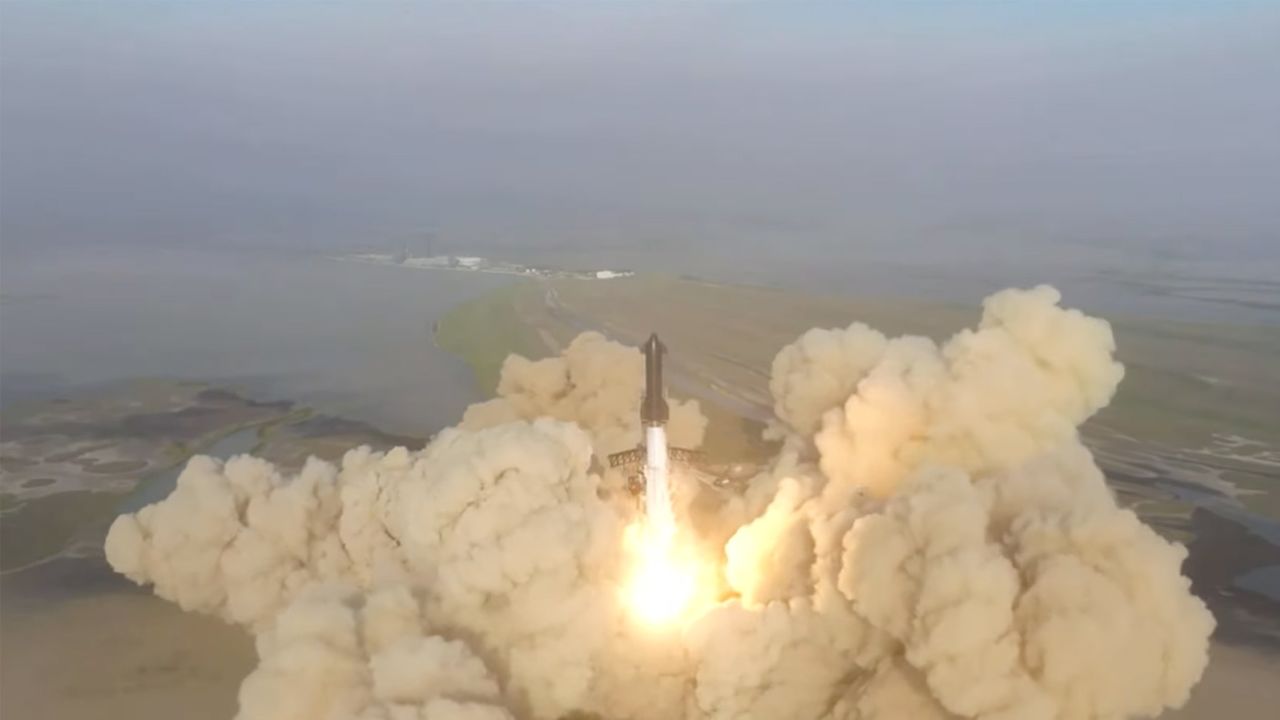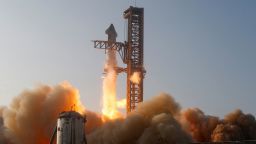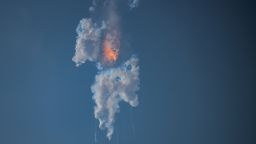Environmental groups are suing the Federal Aviation Administration in federal court over SpaceX’s launch of its massive Starship rocket last month. The groups argue that the agency failed to adequately investigate the potential harm the launch – or a mishap – could do to the surrounding environment.
The rocket, which is the most powerful ever built, took off from a launch pad at SpaceX’s privately owned spaceport in South Texas on April 20 before exploding over the Gulf of Mexico about four minutes into flight.
The lawsuit, which was filed Monday in a federal court in Washington, DC, alleges that the FAA authorized the launch “without complying with bedrock federal environmental law, without fully analyzing the significant environmental and community impacts of the Space X launch program — including destruction of some of the most vital migratory bird habitat in North America — and without requiring mitigation sufficient to offset those impacts.”
The lawsuit says the area around the launch is essential habitat to federally protected species, including the endangered ocelot.
“It’s vital that we protect life on Earth even as we look to the stars in this modern era of spaceflight,” Center for Biological Diversity senior attorney Jared Margolis said in a statement.
The FAA declined to comment on the active litigation.
‘All kinds of environmental harm’
Ahead of the launch on April 20, the FAA issued a finding that the launch would have no significant impact on its surrounding environment. Therefore, the agency didn’t proceed with a more in-depth environmental assessment, which would have taken more time.
Margolis told CNN that the SpaceX explosion proves the groups’ legal argument that the FAA erred in its decision-making.
“They just proved our point here,” Margolis said. “What ended up occurring was exactly what we expected. There’s all kinds of environmental harm that’s clearly an issue and needs to be fully considered, and they didn’t consider it.”
Environmental groups are suing the FAA in hopes the agency will go back and do a far more comprehensive environmental analysis of the impacts of the launch. Margolis said a more in-depth environmental analysis from FAA could have issued a finding that SpaceX needed to use more water to cool down its launch pad, which ended up exploding.
Margolis argued that even when launches don’t end in a massive explosion, they still can present a danger to bird species that use the area for migratory routes.
“It’s an incredibly important area for birds,” Margolis said. “There’s an incredible amount of heat and light from the launches even when they don’t go wrong.”
Margolis said the impact of scattered debris from the explosion isn’t over yet; environmental groups are concerned that recovery efforts of trucks and other heavy equipment to pick up residual metal and concrete could further harm wildlife.
“You have so much [debris] in the area that recovering it could cause even more damage,” he said.
The FAA’s role
The FAA licenses commercial rocket launches and gave the green light for the SpaceX launch attempt after more than a year of back-and-forth.
The agency is also currently charged with overseeing a mishap investigation into what caused the Starship’s failed test flight last month. Such investigations are routine and have taken place after previous — but smaller-scale — Starship test launches in South Texas.
The FAA’s review “will determine the root cause of the event and identify corrective actions the operator must implement to avoid a recurrence,” the agency said in an emailed statement last week.
Separately, the FAA is also carrying out an “anomaly response plan,” which is part of the Programmatic Environmental Assessment the FAA issued for Starship in 2022.
“SpaceX is responsible for its implementation and for local, state and federal compliance requirements,” FAA spokesperson Steve Kulm said via email on Sunday.
When asked whether the FAA could confirm if debris reached areas that it was not expected to reach, Kulm said that Cameron County — which encompasses SpaceX’s facilities near Boca Chica Beach — “issued a statement to address all inquiries regarding the dust to be sent to SpaceX.”
CNN has reached out to SpaceX for comment on the lawsuit, though the company typically does not respond to routine requests for comment from reporters. SpaceX is not named as a defendant on the suit.
Metal ‘hurled thousands of feet away’
The US Fish and Wildlife Service also said in a statement last week that it was working with SpaceX, the FAA and other involved parties to “provide on-the-ground guidance to minimize further impacts and reduce long-term damages to natural resources.”
That activity includes ensuring that SpaceX is complying with the Endangered Species Act, according to the Fish and Wildlife Service, which became the subject of concern after reports that debris from the launch or explosion may have reached nearby protected wildlife areas.
“Following the launch and mid-air explosion, Cameron County closed Boca Chica Beach and State Highway 4 for 48 hours due to launch pad safety concerns, which prevented Service staff from accessing refuge-owned and managed land,” the agency’s statement reads. “Once the closure ended, Service staff began their assessment of the launch impacts at 10 a.m. April 22, 2023.”
The agency cataloged some of the impact:
- “Numerous large concrete chunks, stainless steel sheets, metal and other objects hurled thousands of feet away along with a plume cloud of pulverized concrete that deposited material up to 6.5 miles northwest of the pad site,” according to the statement. Locals in Port Isabel reported a strange dust settling over the community after launch.
- “Although no debris was documented on refuge fee-owned lands, staff documented approximately 385 acres of debris on SpaceX’s facility and at Boca Chica State Park, which is leased by the Service and managed as a component of the Lower Rio Grande National Wildlife Refuge,” the statement reads.
- “Additionally, a 3.5-acre fire started south of the pad site on Boca Chica State Park land. At this time, no dead birds or wildlife have been found on refuge-owned or managed lands,” the agency said.
SpaceX’s take
SpaceX CEO Elon Musk said during a Twitter Spaces chat on Saturday evening that he believed SpaceX would be ready to launch Starship on another test flight within six to eight weeks from a technological standpoint.
When asked about potential legal backlash from environmental groups on Saturday, Musk was defiant. “Look at an aerial picture of the of the area and — apart from the area around the launch stand — tell me where things are are damaged. … I think you can’t even see it at this point,” Musk said.
“To the best of our knowledge, there has not been any meaningful damage to the environment,” Musk added.
Musk said he was “glad to report that the pad damage is actually quite small,” though it would take “six to eight weeks” to get the infrastructure prepared for another launch.
This story has been updated with additional information.
CNN’s Ross Levitt contributed.







